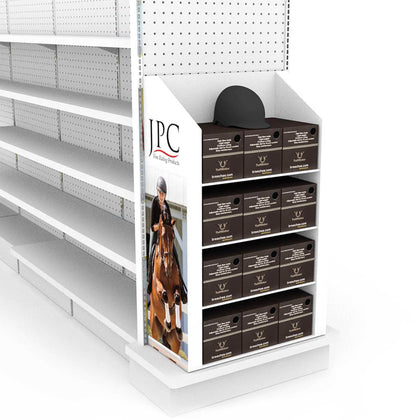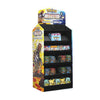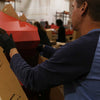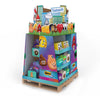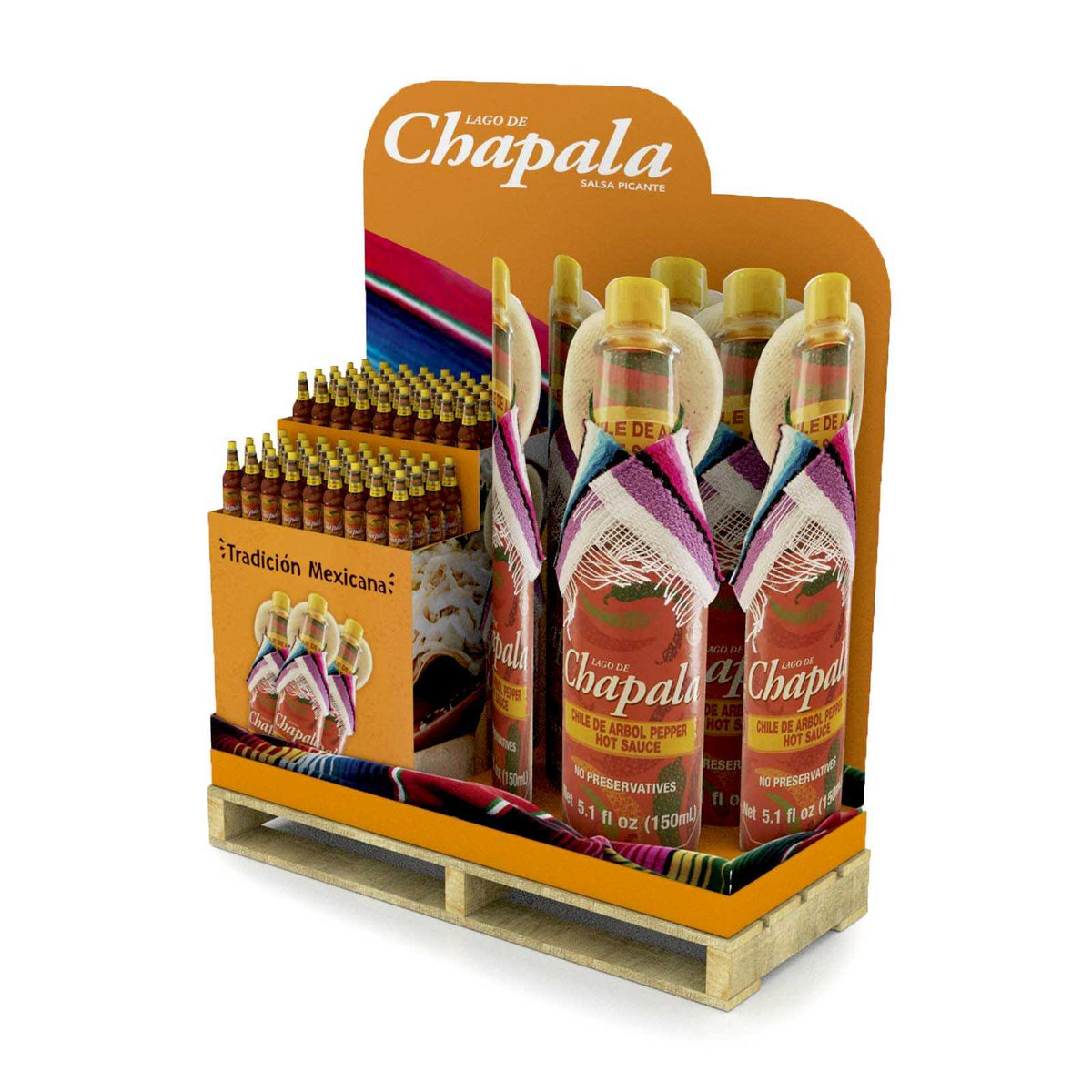

Choosing Between Custom & Stock Displays
The market is always in flux, and choosing between a custom retail display and a stock retail display can be a make or break proposition. Before you choose which type to buy for your campaign, you need to consider your entire plan.
Lead times are getting increasingly shorter for brands, which is why so many are opting for a stock display that can get them to retail sooner - but what they aren’t considering is what a custom display gives them.
A competitive edge is exactly what every brand needs. The ability to better target their customers, and the chance to use high-speed digital printing gives brands so much more control.
So before you make your next purchase, here are 10 things to consider before buying a stock retail display.
Table Of Contents
1. Stock Displays May Not Fit Your Product
First, take into account your product type. Some products can do perfectly fine with a stock display, but if you have a unique option to display packaging and the ability to put your product out on display - you need a custom option.
Efficiently stacking your products allows for the maximum product to be on display, and allow retail stores to restock fewer times in a day.
Make sure you know your dimensions and are making the right choice for a display.
2. What Is Your Required Product Capacity?
Next you want to figure out exactly how much product you can put on display. Some stock options will only allow for an option that gives you 25% less products than you want, do the math and figure out how much down time the display will have.
The display needs to hold a certain amount of product to make the economics of your supply chain make sense, otherwise there’s no point.
One of the biggest considerations is the load capacity of the display. How much can it hold of your product, let alone efficiently hold. Lightweight items may not have an issue, but electronics could.
3. Stock Display Sizes Are Locked
Every retailer has a standard sales number per-square-foot of the display. That makes it an easy calculation for you to run the numbers of how much you need to sell. Plus you need to make sure your display is compliant.
A smaller footprint will increase your chances of getting a retail store placement, but it will also mean less products on display. So do your research and see which options fit your category, and what option is the best to stand out.
With a custom display and the right manufacturer, you’ll be automatically approved for your choice retailer or club store, and have a unique footprint.
4. Stock Displays Allow For Limited Customization
This is the biggest issue with a stock display. While there are options to do slight alterations for a more custom look, the problem you’ll have is your display won’t attract customers.
Sure it will be a functional display, but how can you attract new customers to your brand if you take a plain approach like this?
Custom graphics aren’t enough. If you want to make an impact on your business, you need to come up with a product presentation plan that is tied directly into your marketing campaign.
5. Custom Displays Control Your Image
Next, think about your favorite brands. What displays do they use to enhance their branding? How can you take that same approach to your display? If you're planning on a holiday display, plan wisely.
Using a custom retail display allows you to completely control your brand and messaging to your customers in ways a configurable stock display doesn’t. From shape to product presentation and messaging.
Making your display be a part of your product experience, you can attract even more customers to engage with your products. Try adding Digital Printing for even more customization.
6. Shipping + Supply Chain of Displays
Next, think about the entire supply chain and shipping costs of your display plan. This is one of the most important steps to understand which display type is right for you.
Sometimes your display shipping cost can be as much as a third of your entire display budget, but that might be exactly what you need. There are three main options for shipping displays.
KDF
First is KDF, or Knocked-Down-Flat. This is the cheapest option to ship your display. Your display is designed, printed, and shipped unassembled.
This means that you need to design a display that is simple enough to assemble for retailers or a 3rd Party Vendor. That also means you will need to print and deliver instructions.
Pre-Assembled
Next is shipping an assembled display. You may choose to ship this due to the complicated display structure, or due to weight. This increases costs as you need to maximize freight capacity to cut down on costs.
Pre-Assembled + Full Kitted
Finally, this is an option we have a lot of experience with. We offer full turnkey operations with a Co-Packing division. This allows us to manufacture and assemble displays, pack it with products, seal the displays with a wrap, and then ship them nationwide.
The economics are very different between these three delivery options.
7. Display Assembly
Though it is more expensive to ship retail displays that are pre-assembled, it can also cut costs in other areas and allow you to make more money when there is no assembly needed at retail stores.
If you choose to ship a retail display KDF then you will need to accomplish two more things. First, instructions that are easy to follow will need to be created and sent printed or digitally. Second, you will need to create a budget and timeframe to account for the time.
If a display assembly exceeds 15 to 20 minutes, then you may want to find a different display type. The reason is that will be either costing you money, or causing friction with the retailer.
The worst thing that can happen is a poorly or damaged display is at retail not attracting customers.
8. Stock vs Custom Display Durability
Next think about the durability of your display - or how long do you need it to last? The longer a display needs to last, the more you need to invest in your display.
If your products sell through in 5 weeks, then you could create a display that only needs to last that long before being disposed of. While a stock display will have general designs that can last long enough, plenty of them can look shopworn and attractive within 2 weeks.
By creating a custom display, you can choose the exact materials to give you the right display. Not only that, you can create multiple graphics and print new designs for a refreshed look at retail every time you replace them.
9. Retail Display Maintenance
Now you need to have a plant for retail display maintenance. How quickly does it look shopworn? How sturdy is it?
The goal of a display is to display your products in an attractive way and draw in customers, a poorly maintained display won’t do that.
Your retail display plan should take into account how often they need to be replaced. And you should consider having sales associates check the displays periodically to ensure everything is lasting as intended.
Will your stock display hold up? Or do you need a custom retail display for a sturdier design?
10. What Is The Display’s Total Cost?
Finally, you need to consider the total cost of your display. When you take everything above into account and have a total retail program plan that calculates your return on investment. This final tally will help you determine if a stock display or a custom display is best for you.
Stock retail displays can be cost effective because there is no custom design time needed, so the display can skip a step - but a custom retail display can give you options that cut costs in other areas and attract more customers.
Sometimes the unit cost isn’t the best metric to decide your display option, but it can give you insight into an overall strategy.
If you’re still on the fence over which option is right for your campaign, it’s best to take a broader perspective, rather than choosing the cheapest option. When you do have a final budgetary plan together, you will be making a very informed decision.
Bennett Makes Custom Retail Displays
Bennett is a premier packaging and retail displays manufacturing company striving to protect and promote our clients' products with customized corrugated solutions. When you work with us, you’re part of the family. We will partner with you every step of the way.
With our fully-integrated design-to-delivery process, we can be the single supplier source. We are an award-winning manufacturer of virtually anything corrugate. We offer everything from plain brown shipping boxes to sophisticated, high-graphic printed point-of-purchase displays, and everything in between.

